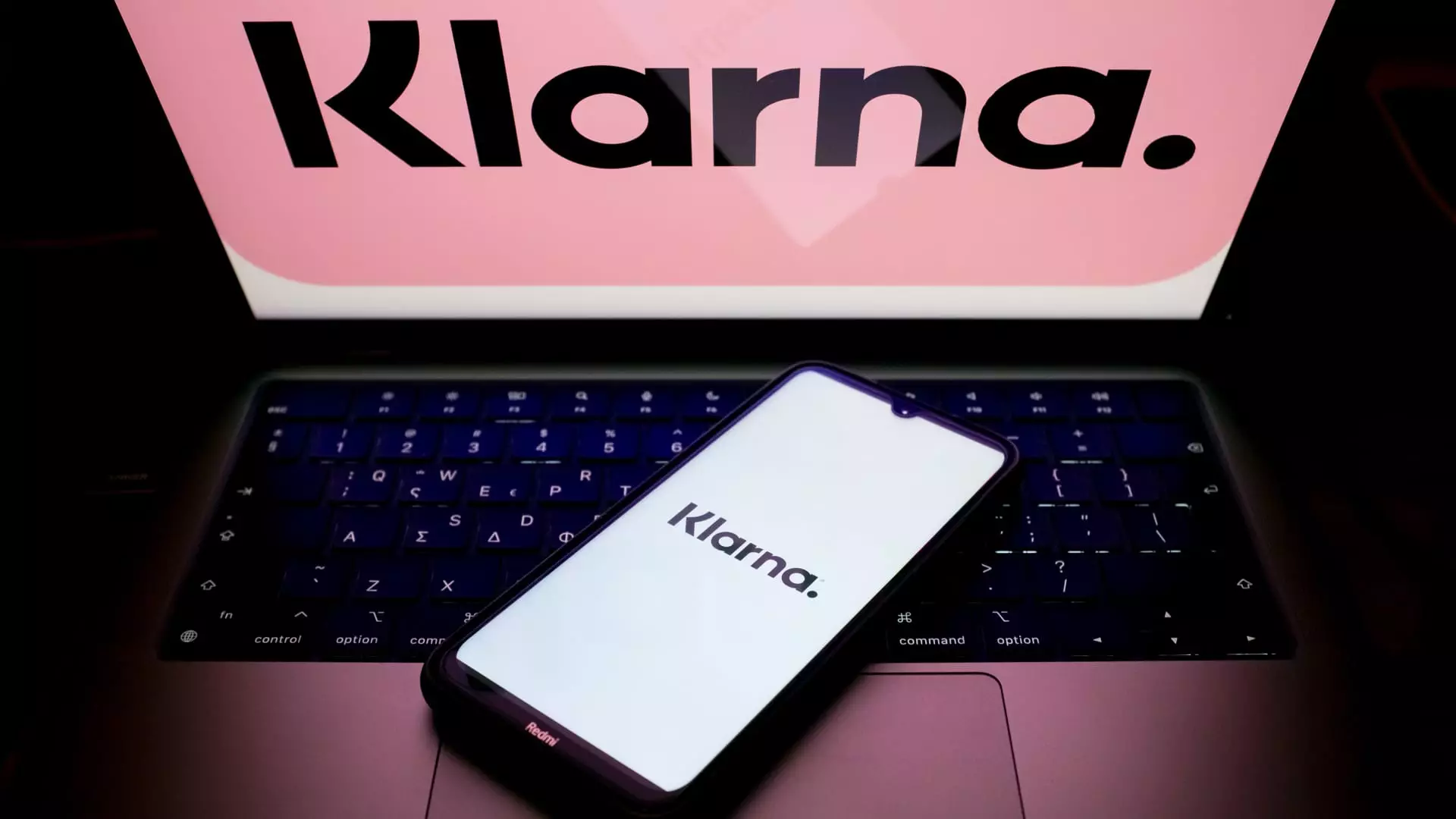In the landscape of modern finance, the Swedish fintech giant Klarna has established itself as a household name, particularly due to its “buy now, pay later” (BNPL) services. Despite its success, the company now finds itself confronted with the challenge of broadening its horizon, venturing into new territories with the launch of its Visa debit card, the Klarna Card. This strategic pivot suggests a bold ambition to transition from a short-term credit powerhouse to a more versatile banking player. While such a move is audacious, it also raises alarming questions about its implications for consumers in the evolving fintech arena.
Klarna’s recent announcement of piloting the Klarna Card in the U.S. comes with significant implications. As this service rolls out to American consumers, the firm hopes to redefine its image—a task fraught with risk. In a market already saturated with fintech solutions and traditional banking options, Klarna must tread cautiously or risk alienating its existing customer base, who predominantly associate it with BNPL. The pressure mounts as the company prepares for a highly talked-about initial public offering, fueling the need to diversify and be perceived as more than just a temporary solution for shippers looking to split payments.
Competing on the Banking Battlefield
Klarna’s entry into the U.S. consumer banking market is nothing short of ambitious. The American banking landscape is dominated by entrenched players such as JPMorgan Chase and Bank of America. In this fiercely competitive environment, Klarna enters as an outsider, not just battling financial giants but also other fintech challengers like Chime, which have successfully carved out substantial customer bases. Klarna’s proposal to shift consumer perception towards a neobank experience signifies a crucial attempt to establish relevance amidst formidable competition.
What makes the Klarna Card unique is its integration of multiple funding sources, courtesy of Visa’s Flexible Credential service. This innovative feature allows users the flexibility to toggle between debit, credit, and BNPL options, which sounds tempting on paper. However, the question persists: is this complexity beneficial or ultimately convoluted for the average consumer? While offering multiple funding sources may seem like a boon for flexibility, it also runs the risk of obscuring the decision-making process, potentially leading consumers into an unmanageable web of borrowing options.
Trust Issues and the Financial Safety Net
Though the Klarna Card promises features akin to those of traditional checking accounts—complete with FDIC-insured deposits through a partnership with WebBank—there’s an underlying skepticism that cannot be overlooked. Trust in fintech companies is still a relatively nascent concept; Klarna does not have a U.S. bank license. As financial products become more integrated, the line between fintech and banking starts to blur. This could either be a monumental leap towards modern financial solutions or a precarious landmine for users, given the inevitable lapses in oversight often associated with digital-first financial models.
Another pertinent issue is consumer dependency on BNPL products. Klarna’s attempt to expand its brand identity may inadvertently perpetuate a cycle of reliance on credit. The ease of toggling between immediate gratification through BNPL and the slower conventional banking options could create a paradox not just of choice but of financial behavior that encourages overspending. Is Klarna inadvertently nurturing a generation of consumers who struggle to curb impulse spending due to the allure of buy now, pay later?
Innovation Should Not Come at a Cost
The fintech revolution is lauded for democratizing access to financial services. Yet, with Klarna’s recent developments, one must exercise caution and critically gauge whether these innovations genuinely serve the consumer or merely pivot the company’s focus to financial gain through user engagement and transaction fees.
As Klarna marches forward with the Klarna Card, it embodies a significant shift in consumer finance, merging the latest in payment technology with the convenience that today’s consumers crave. However, this enticing prospect shouldn’t cloud our judgment on the potential hazards that come along with it. While the company strives to reshape its identity in the banking landscape, there lies an obligation to ensure that consumers are well-informed and equipped to make the best financial decisions for themselves.
Ultimately, Klarna’s efforts to cultivate a broader banking presence could serve as a double-edged sword—a generic service wrapped in a shiny new card could lead consumers either to unprecedented ease in managing money or to a treacherous cycle of debt. Only time will reveal the ramifications of this bold step into the depths of consumer banking.

